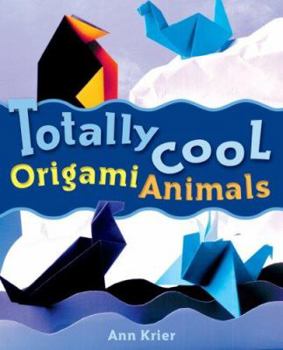Totally Cool Origami Animals
Origami is just about the perfect kids' craft--it's fun to do, develops hand/eye coordination, fortifies math skills, and requires only paper. Plus, when the animals are as cute as the paper menagerie on display here, how could any child resist? These enchanting projects use a mix of traditional Japanese folk art techniques as well as simple folding, and they're divided into different levels so that every child can enjoy a good challenge...without any frustration. For beginners, the selection includes a dog, fox, cat, bunny, and starfish, while intermediates have a stingray, swan, standing peacock, grasshopper, bear, and pig. The advanced projects feature puppets, a frog that actually jumps, and a diplodocus sure to delight dino fans.
Format:Hardcover
Language:English
ISBN:1402724489
ISBN13:9781402724480
Release Date:April 2007
Publisher:Sterling
Length:96 Pages
Weight:3.25 lbs.
Dimensions:10.5" x 0.5" x 8.5"
Age Range:8 to 12 years
Grade Range:Grades 3 to 7
Customer Reviews
1 rating
You need to be able to THINK to use an origami book
Published by Thriftbooks.com User , 18 years ago
Whether or not one achieve success in origami is directly related to the ability of the reader/folder to incorporate the visual diagrams (pictures) with the instructions. The book concept was a "fold along" - meaning an adult, with patience, should assist the child in making the animals in the book. I am afriad the the "professional" reviewer failed to read the instructions. The first line of the Penquin noted above as having "no directions" adivises that the folder select a 7" square for the adult penguin, while the baby, following the same exact diagrams, utilizes a 4" square. The Snake head noted as "mysteriously changing colors" is presented that way to SET IT APART from the other "knots" in the snakes body, as it is different. My group of test folders, 7-9 year olds, in several different schools, had what I consider typical success with the book alone. Unscientifically speaking, about 30% of kids that try origami achieve results when left alone. It requires that the child and any assisting adult are both able to think in terms of 3-D models. This type of thinking is not achievable by everyone - some get it, some don't. It doesn't mean one type of thinker is "better" or "smarter" than another, it simply means that some people can achieve success with origami and some can not. I noted while doing research, that the children were better able to respond to "fold in or fold out" in lieu of the "language" created by the professional origamists, simplifying it to help with results. As the author, my intent was to provide a book that teachers and parents could work with a child in achieving the craft. It was never intended that the book be purchased and handed over directly to the child without interaction. If you don't like interaction with a child, this book is probably not for you. If you want to have fun working with a child, this book is PERFECT for you.





